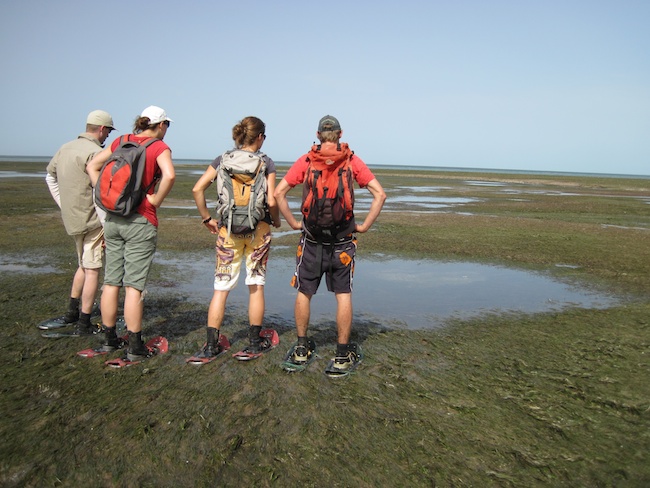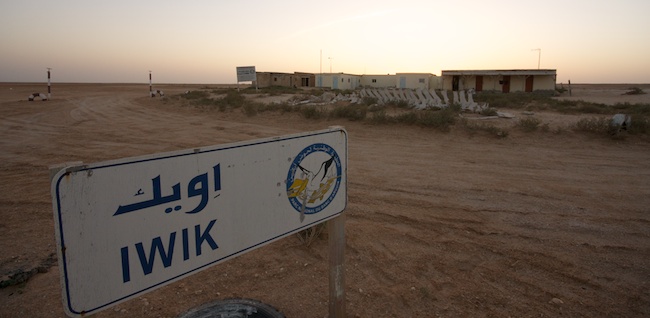The Bank d’Arguin is a magnificent place: Not only to see loads of beautiful birds, some marked with colourfull rings as a souvenir from the Netherlands, but also to do seagrass research. Together with Jim de Fouw (our expedition leader), Laura Govers, Tjisse van der Heide en Karin van de Reijden we traveled through the Mauritanian desert to the Bank d’Arguin research station.
This station has been used for decades by many researchers, which can be noticed by the strange collections of research equipement: fake birds, umbrella’s, cages, nets, loads of rain meters (desert??) and snow rackets. These snow rackets were used the next day (don’t worry: no climate change-induced snow storm in the desert) to walk on the mudflats to reach our seagrass plots, to prevent to sink knee deep in the mud, which did occur to Laura due to a broken racket. The tidal flats are dominated by seagrass: in the intertidal Zostera noltii and a bit of Halodule whrightii and subtidal Cymodocea nodosa. Contrasting to the tropical reeftop seagrass meadows where I usually work, here, the seagrasses build up a hudge amount of organic matter and trap a lot of suspended particles so that the mudflat is raised by a couple of centimeters per year. In an experiment we test the effect of this phenomena and bivalves on seagrasses. Another series of experiment and observations focussed on the seagrass foodweb.  Unfortunately snorkeling is not really a lot of fun here because of the poor visibility. Above the seagrass we encountered a lot of bottlenose dolphins (twice the size of the Indo-Pacific ones), fidler crabs, shoavelnose-, torpedo-, and sting-rays, jumping yellow mullets, borrowing crabs, Cymbium shells, and in the ground under the seagrass off course loads of the world-famous Loripes lacteus and Anadara (“Shell”-) shells.
Unfortunately snorkeling is not really a lot of fun here because of the poor visibility. Above the seagrass we encountered a lot of bottlenose dolphins (twice the size of the Indo-Pacific ones), fidler crabs, shoavelnose-, torpedo-, and sting-rays, jumping yellow mullets, borrowing crabs, Cymbium shells, and in the ground under the seagrass off course loads of the world-famous Loripes lacteus and Anadara (“Shell”-) shells.
A very dramatic sight was the enormous amount of dead green turtle carapaces that were washed up the beach and eaten by jackals in the previous month; approximately 1 dead turtle every 20 meter at a stretch of 3km beach. There was no sign of poaching (cuts in the carpace) or hunger, the carapace lenght (CCL) ranged from 40 cm till 90 cm, and the local rangers and researchers also don’t have a clue what happened here, leave a comment if you know more! Some random photos:


